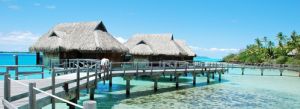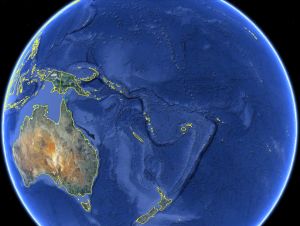
Exploring the history and experiences of mixed heritage persons and inter-racial relationships across the world

Exploring the history and experiences of mixed heritage persons and inter-racial relationships across the world
 In this article, Oceania includes Australasia as well as the Pacific island regions of Polynesia, Micronesia and Melanesia. The following countries will be covered in greater detail in this section: New Zealand, Tahiti and Hawaii.
In this article, Oceania includes Australasia as well as the Pacific island regions of Polynesia, Micronesia and Melanesia. The following countries will be covered in greater detail in this section: New Zealand, Tahiti and Hawaii.
The Spanish got to be the ones with automatic rights to colonise most of the Pacific in their Treaty of Tordesillas with the Portuguese. In a later treaty, parts of the East Indies and some of Australasia would be included in their sphere. Most of their energies however went into colonising the Americas and it was the Dutch in the form of Willem Janszoon and later Abel Tasman working for the East Indies Dutch company VOC, who first explored the Australasia and southern pacific islands in the 1640s. Captain Cooke followed a few years later. The British followed that by colonising Australia in 1788 continuing until much of Oceania were part of the British Empire. Other European powers managed to get in on the act with French New Caledonia and French Polynesia and Germany in New Guinea and Samoa which they lost after WWI. Hawaii became a U.S. territory in 1898.
 What is obvious today is this area was populated by very early migrations from the East Indies with the Micronesians the last in the region to develop from a mixture of Melanesians, Filipinos and Polynesians. New Zealand's Māori are the country's largest minority having arrived from Polynesia in several groups some time before the 12th century. Only Australia in the form of the Aborigines appears to have had an indigenous population.
What is obvious today is this area was populated by very early migrations from the East Indies with the Micronesians the last in the region to develop from a mixture of Melanesians, Filipinos and Polynesians. New Zealand's Māori are the country's largest minority having arrived from Polynesia in several groups some time before the 12th century. Only Australia in the form of the Aborigines appears to have had an indigenous population.
Australia's history is not a happy story. A year or so after the first settlements, a smallpox epidemic broke out and together with a later epidemic wiped out about half the Aborigines of South Eastern Australia. These early settlements included prisoners and several penal colonies were created with even the free colony in Western Australia accepting British convicts because of an acute labour shortage. Between 1788 and 1868 when the transportation policy was stopped, 161,700 convicts, the vast majority male and working class, were transported.
The gold rushes brought many immigrants to Australia from all over Europe, North America and China which dwarfed the original penal immigration levels with Victoria's population growing from 76,000 to 530,000 in some 6 years. Following the usual pattern in the colonial era, men made up the vast majority of settlers and there is no doubt that Aboriginal women came in for some attention. Some proof lies in the 'Stolen Generations' policy which allowed the removal of 'indigenous children' said to be a response to the abandonment of mixed race children (called 'half-castes', 'crossbreeds', 'quadroons' and 'octoroons') though rarely was that the case for removal. The book and the movie 'The Rabbit Proof Fence' depicts a story during this period that only ended in 1969. It has been suggested is that the ultimate aim of this policy was the assimilation of such individuals into white society in 4 or 5 generations in which it was believed the native indigenous Aborigine would be near extinction.
By the late 1880s, the majority of people living in the Australian colonies were native born. Following the achievement of independent Sovereign Nation after WWI, the White Australia policy intentionally restricted "non-white" immigration to Australia from 1901 to 1975 which will have in turn restricted the potential of inter-racial relationships. Since then, there has been immigration but it is unclear how many of the population claim mixed heritage.
 New Zealand and the Pacific Islands followed a familiar pattern. First came the numerous indigenous contacts with sailors, followed by the European diseases such as influenza and measles that ravished the populations, some internal power struggles between native groups leaving a weakened society to resist the growing settlements of Europeans and then colonisation usually to the detriment of local populations.
New Zealand and the Pacific Islands followed a familiar pattern. First came the numerous indigenous contacts with sailors, followed by the European diseases such as influenza and measles that ravished the populations, some internal power struggles between native groups leaving a weakened society to resist the growing settlements of Europeans and then colonisation usually to the detriment of local populations.
The majority of New Zealand's population is of European descent. A series of Māori inter-tribal wars and fights with the British colonisers led to the large loss of land and declining population that by 1860, the Europeans in New Zealand equaled that of the M?ori, at about 60,000 each. In thelate 19th century many believed that the M?ori population would cease to exist as a separate race or culture but there have been many steps taken to preserve the heritage. There has been substantial mixing of the M?ori and the Europeans that there is no racial test to determine who is Māori. The mere acceptance of one's Māori ancestry is good enough and so a fairly large percentage of those identifying themselves as Māori are of mixed European heritage. There seems to be a social non acceptance of classifying people as having mixed heritage despite New Zealand's fairly lax, by today's standards, immigration policy that means a growing number of predominately Asian immigrants.
Further immigration from the Far East namely China and Japan further adds to the Pacific Islands' racial mix. Both Hawaii (now a USA state) and French Polynesia boast fairly large minority mixed heritage populations. Tahiti and environs have some 15% mixed heritage with one section referred to as the Demis (meaning "Half") who are people of mixed European and Polynesian descent. Multiracial Americans made up just over 20% of Hawaii's population and it also has the highest percentage of Asian Americans in the USA providing for a further interesting mix.